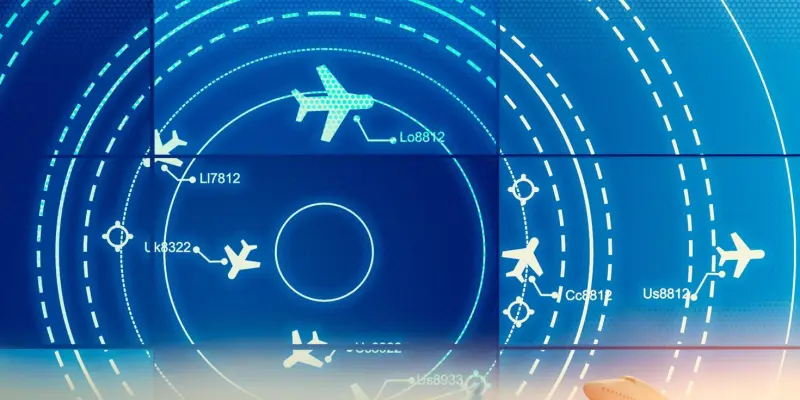In an increasingly digital world, airports are at the forefront of technological advances, containing vital systems highly susceptible to cyberattacks. The recent cyberattack on South African Airways (SAA) underscored the pressing need for improved cybersecurity protocols across aviation sectors. While the attack targeted certain digital platforms, it left essential functions such as flight scheduling and check-in services untouched. Such incidents connect to a broader theme of vulnerability within critical national infrastructure, especially in South Africa, where a shortage of skilled cybersecurity professionals compounds the risk. The involvement of the State Security Agency in investigating these breaches further highlights the national security implications. As cyber threats relentlessly rise, the questions for South Africa’s airports are not just about preparedness but also the adaptability of their security strategies. Are these bustling hubs equipped to weather future attacks, safeguarding both passengers and sensitive data?
Current Cyber Threat Landscape
Cyber threats targeting airports have intensified, reflecting a global trend as digital attacks gain complexity and persistence. This issue is not isolated to South Africa but resonates worldwide, with increased attacks on government and infrastructure systems. Statistics reveal a startling growth in cyber threats, especially ransomware, which has seen a significant increase globally. In South Africa alone, attacks have surged dramatically, amplifying the urgency for robust cyber defenses. Airports, operating as critical nodes in national and international networks, hold substantial amounts of data, making them appealing targets for cybercriminals. Cyber risks extend beyond operational disruptions; they threaten reputations, passenger trust, and potentially national security. The consequences of breaches range from financial losses to legal liabilities and compromised customer data. Despite the presence of cybersecurity measures, the sophistication of attackers and their tactics continues to evolve, necessitating adaptable and proactive defense strategies. Governments and institutions, including aviation sectors, must respond decisively to this challenge, continuously updating their knowledge and technologies. The growing reliance on digital systems elevates the importance of strong cybersecurity protocols, requiring a multifaceted approach. Critical national entities such as airports cannot neglect cybersecurity—not only is it essential for protecting data and operations, but it also plays a pivotal role in maintaining trust. Effective risk management, incident response capabilities, and continuous monitoring are no longer optional but vital components in the defense against cyber threats. The complex nature of airport operations demands that their cybersecurity strategies evolve in response to emerging threats. Investments in cybersecurity training and collaboration with cybersecurity experts are indispensable steps toward fortifying their defenses. In this high-stakes digital environment, remaining static is not an option.
Cybersecurity Measures in Aviation
As technology interweaves more intricately with aviation operations, airports must prioritize cybersecurity. South African airports are urged to implement comprehensive measures, balancing proactive prevention with reactive responses. Key strategies include establishing authoritative cybersecurity frameworks tailored to aviation’s unique requirements, ensuring all systems are secure, from passenger data management to air traffic control communications. Adopting a layered security model provides multiple defenses against breaches, safeguarding each part of the digital infrastructure. The seamless integration of advanced technologies enhances situational awareness and improves threat detection and response time, enabling timely intervention in the face of imminent threats. Moreover, implementing industry standards and adhering to international cybersecurity laws ensures consistent efforts align with global best practices. Human factors play a critical role in cybersecurity, necessitating continuous training. Empowering employees with knowledge about the latest cyber threats and vulnerabilities strengthens security, transforming them into valuable assets against attacks. Regular drills and simulations prepare staff for real-world scenarios, highlighting weaknesses and improving readiness. An effective cybersecurity posture also relies on collaboration with external stakeholders, from industry experts to software providers, keeping strategies up-to-date with the latest technological advances. Furthermore, governments are called upon to support the aviation sector, facilitating collaborations that enhance cybersecurity awareness and providing resources for implementing state-of-the-art protective measures. By fostering a culture of shared responsibility, airports become more resilient, securing their operations against persistent threats.
Future Prospects and Considerations
To navigate the evolving cyber threat landscape, South Africa’s airports must remain adaptable and forward-thinking. Recognizing the continuous evolution of threats necessitates ongoing innovation in cybersecurity strategies. Implementing predictive technologies powered by artificial intelligence can proactively identify vulnerabilities and recognize patterns indicative of threats before they materialize. These intelligent systems enable scanning for abnormalities, ensuring responses are swift and tailored, minimizing potential damage. As airports prepare for the future, integrating cybersecurity into initial design processes is vital. Building systems with security as an inherent feature rather than an afterthought improves resilience and mitigates risks. Public-private partnerships offer pathways for robust cybersecurity frameworks, ensuring airports can access cutting-edge technologies while sharing financial and technical burdens. These alliances can elevate skills within the sector, bringing global expertise to local contexts. Moreover, policies and regulations must advance alongside technical solutions, with governments playing a crucial role in establishing guidelines and standards that promote security. Reflecting on the lessons from incidents like the SAA attack ensures holistic, adaptive strategies are in place, addressing both immediate and long-term needs. By committing to a resilient cybersecurity culture, South African airports can safeguard their operations, protecting passengers and preserving trust as they navigate the rapidly changing digital landscape.
Conclusion
In today’s digital age, airports are critical touchpoints vulnerable to cyber threats, with vital systems susceptible to attacks. The recent cyber incident involving South African Airways (SAA) highlighted the urgent need to bolster cybersecurity measures in the aviation sector. Although the attack mainly affected digital platforms, crucial operations like flight scheduling and check-in services were not compromised. This event touches on a broader issue of fragility within essential national infrastructure, notably in South Africa, where a shortage of skilled cybersecurity professionals heightens risks. The State Security Agency’s involvement in examining these breaches emphasizes their significance to national security. As cyber threats continue to rise, South Africa’s airports face challenges beyond readiness; their security strategies must also adapt. Are these busy terminals truly prepared to fend off future attacks, ensuring both passenger safety and protecting sensitive data from compromise?

